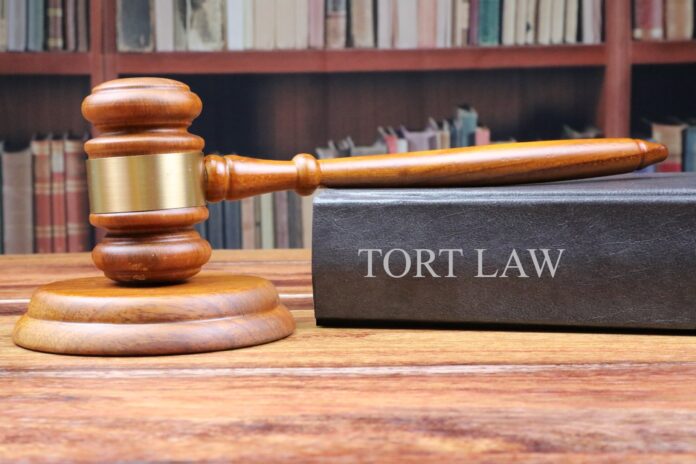This article has been written by Naveen Talawar, a law student at Karnataka State Law University’s law school. The article deals with the tort of negligence on the roads, the meaning of negligence, its elements, the legal obligations of drivers, different types of negligence in road accidents, and examples of negligence-related accidents with defenses.
it has been published by Rachit Garg.
Introduction
Negligence is the act of being careless in a manner that harms another person. In any auto, truck, bus, or other kind of on-road collision, it is an act or failure to act that causes an accident. Running a stop sign, failing to yield, driving too fast, driving while intoxicated, driving inappropriately for the weather conditions, or allowing someone to drive who is not licensed or otherwise qualified to do so are all instances of failing to follow the rules of the road and constitute negligence.
According to data from the National Highway Traffic Safety Administration (NHTSA), human error is the main factor in most car accidents. One of the most frequent causes of car accidents currently is negligent driving, which refers to instances where a driver drives carelessly or without thought. It’s a serious issue because drivers are more distracted than ever. Given how common, dangerous, and deadly negligent driving can be on the roads, this article deals in detail with it.
What does negligence mean in road accidents
The legal definition of negligence is “failure to exercise the degree of care that would be expected of a person of ordinary prudence in like circumstances in protecting others from a foreseeable and unreasonable risk of harm in a particular situation.”
Negligence in road accidents is defined as the failure to exercise reasonable care, which results in the unintentional harm or injury of another person. For instance, a large number of auto accidents occur because of the driver’s carelessness or inattentiveness while operating the vehicle.
A driver must exercise reasonable care in order to avoid injuring other drivers, passengers, or pedestrians. If a driver fails to exercise reasonable care and someone is injured as a result, the driver may be held liable for the victim’s injuries and other losses. Victims of careless driving may be entitled to compensation for their injuries, pain and suffering, lost wages, and property damage.
Elements of a negligence claim
The following four elements must be proven in order to establish negligence.
Duty of care
First, the plaintiff must establish that the defendant owes them a legal duty of care. A duty is an obligation under the law to take reasonable care or act prudently. Every person who drives a car has a duty to drive carefully. Every driver has a responsibility to operate their vehicle in a manner that keeps everyone on the road, including other motorists, passengers, cyclists, and pedestrians, safe. They must take reasonable precautions and abstain from harmful behavior. This step is fairly simple because drivers must use due care and obey traffic laws. All drivers have a responsibility under the law to drive safely and in accordance with the rules of the road.
Breach of duty
A breach of duty occurs when reasonable care is not taken. In other words, it involves acting in a way that a prudent person would not act or refrain from acting prudently. The actions of drivers are compared with what a ‘reasonable person’ would do in the same circumstance. It’s essential to prove in personal injury cases that the at-fault driver broke traffic laws or failed to act in a reasonable manner. Having to prove either one or both of these points illustrates that the driver was unable to exercise a reasonable standard of care. When drivers don’t exercise a reasonable standard of care, it constitutes a breach of duty. The plaintiff must show that the defendant breached their duty to drive safely. A case for negligence against the at-fault driver is strengthened by proving a breach of duty. Common examples of negligent driving include failing to stop at a red light, driving too fast or too slowly, and failing to use the vehicle’s turn signals.
Causation
Negligence cannot exist unless there is a clear causal connection between the breach of duty and the damage that results. If the failure to perform one’s duty resulted in an accident, individuals would be held legally responsible. If another factor causes the accident or harm, there can be no legal liability. To succeed in a claim against the other driver, it must be shown that their negligence caused the injuries or property damage. There are two methods for proving that the accident was caused by the driver’s carelessness. They are:
Cause-in-Fact
The accident was caused directly by the driver’s negligence. A cause-in-fact is when a driver strikes a car that has the right of way after running a red light.
Proximate cause
The accident was indirectly brought on by the driver’s negligence. Suppose that a drunk driver loses control of their car, drifts off the road, and collides with a power pole. When a pole falls and collides with another moving vehicle on the highway, there is property damage and injuries. This is an example of a proximate cause.
Damages
The costs and losses resulting from auto accidents are known as damages. Actual losses or damages must be the result of the accident in order to have a negligence case. The victim must actually be hurt in some way. Liability cannot be established by the mere possibility that ‘someone could have been hurt‘. There are two categories of damages:
Economic damages
Economic damages are the actual costs associated with an accident. Examples of economic damage include medical costs, repair bills, replacement costs, job retraining expenses, relocation costs, or accessibility upgrades for permanent injuries.
Non-economic damages
The impact of the accident on a person’s life in non-economic ways is included in non-economic damages. Examples of non-economic damages include suffering from chronic phobias, Post-Traumatic Stress Disorder (PTSD), depression, nightmares, extreme anxiety, and pain. It is essential to recognize and evaluate non-economic damages while figuring out how much compensation to claim. Nearly 40% of car accident victims in the US experience PTSD as a result of their mishaps. A person’s quality of life may be negatively impacted by the long-term effects of PTSD, which include emotional detachment, insomnia, flashbacks, and anxiety.
Legal duties of the driver
To avoid injuring other drivers on the road, drivers must follow the law and take reasonable precautions. It is everyone’s responsibility to drive safely for the sake of other motorists, pedestrians, and other road users. If the plaintiff proves the other elements of negligence, the court may find that drivers who disobey any of the following duties are negligent.
Duty to drive at a reasonable speed
While driving, drivers have a duty to maintain a sensible, reasonable speed while taking into account the traffic, the environment, visibility, and other factors. Even going the speed limit could be deemed negligent if, for example, there is poor visibility, the weather is bad, or the situation necessitates extra caution (such as while passing a school where children are likely to be crossing). When a driver travels at a speed that is inappropriate for the circumstances, such as reduced visibility, negligence may be implicated. It doesn’t matter if the person was driving within the speed limit, if the weather is poor or if there are other reasons to slow down, such as when driving close to a school.
Duty to be vigilant and keep a proper lookout
It is the responsibility of drivers to be alert and to keep a close eye out for other cars, pedestrians, and potential road hazards. Drivers are expected to see the same things that a normal, prudent person would. Failure to do so may be considered negligent.
Duty to maintain equipment
Every driver has a responsibility to keep their vehicle in a safe operating condition because it will be on the road alongside other vehicles. This necessitates routine checks to make sure that all brakes and lights are operating properly.
Duty to maintain control of the vehicle
It is the responsibility of every driver to keep their car under control by staying alert, paying attention, and having quick stopping power. Negligence may be assumed if a car loses control for any reason, such as flipping over or drifting off the road.
Duties of driver imposed by state law
The motor vehicle laws of each state determine the standards of conduct for drivers. When a traffic law is broken, there may be a presumption of negligence, which requires the defendant to show they weren’t negligent. The following are some examples of behaviors that might give rise to a presumption of negligence:
- Driving under the influence of alcohol or drugs.
- Violating right-of-way rules, such as those pertaining to a pedestrian’s right of way, and
- Driving on the wrong side of the road.
Types of negligence in road accidents
Drivers may commit serious offenses that put both themselves and other people in danger, or they may make small, seemingly harmless mistakes. Typical instances of negligence on the roads include:
Speeding
Approximately one-fourth of all accidents in the US are caused by speeding or driving too fast for the conditions of the road. Speeding is dangerous as it increases the likelihood that the driver will lose control of the vehicle, gives them less time to react by applying the brakes, necessitates a longer stopping distance, increases crash severity, and reduces the effectiveness of the safety features of the vehicle, such as the steel frame, airbags, and seat belts.
Alcohol impairment
In the US, drunk driving causes the deaths of about 32 people a day. The ability to steer and brake effectively, track moving objects, control one’s own speed, and pay attention to the task of driving are just a few of the abilities that are impaired by alcohol.
Traffic violations
Many drivers speed, but it is important to understand that speed limits are in place for a reason. Due to these speed limits, drivers are obligated to slow down when it is necessary, such as when turning onto another road or driveway or when a pedestrian is crossing the street. Making illegal turns, ignoring stop signs or red lights, or driving the wrong way down a one-way street are all examples of dangerous traffic violations, in addition to speeding.
Failure to yield the right-of-way
In situations like stop signs, red lights, U-turns, at crosswalks or railroad crossings, or when pulling out of a parking lot or private driveway, all drivers are required to yield the right-of-way to other vehicles.
Tailgating
When a vehicle is being followed too closely, there is a greater chance that an accident will occur if the leading vehicle suddenly slows down or stops, leaving the following vehicle with insufficient time or space to come to a complete stop.
Drowsy driving
Due to overwork, lack of sleep, or other risky behaviors, fatigue is a problem that many drivers may experience. Many people are unaware that staying awake for 18 to 24 hours can have similar effects on the mind and body as to drinking alcohol. Drowsy drivers will have slower reaction times, balance issues, and coordination issues, making it more likely that they won’t be able to avoid collisions.
Failing to take into account road construction, weather, and traffic
Traveling at the posted speed limit is sometimes too fast for the conditions and can endanger others on the road. Snow, ice, rain, or fog, for example, can make it difficult to see or stop. Traffic congestion may necessitate unexpected stops. Road construction endangers both workers and other drivers. Drivers must maintain sufficient space between vehicles and slow down or stop when necessary if they are in any of these circumstances; failing to do so can result in collisions and the injury of innocent victims.
Distracted driving
Another significant factor in U.S. road accidents is distracted driving. There are three different types of distractions: manual distractions, which cause the driver to take his or her hands off the wheel, visual distractions, which divert the driver’s attention from the road, and cognitive distractions, which cause the driver to lose focus on the task of safe driving.
Aggressive driving
If a driver is late or feels that someone else is not moving quickly enough, they may experience ‘road rage’ or act aggressively toward other drivers or pedestrians. These drivers may engage in risky behaviors like tailgating, cutting off other cars, or disobeying the right-of-way of other vehicles, bicycles, or pedestrians.
Examples of road accidents caused by negligence
Since human error causes the vast majority of motor vehicle collisions, the negligence of the driver can be a contributing factor in almost any type of accident. Road accidents caused by negligence commonly occur in the following ways:
- Broadside: When the front of one car strikes the side of another, the collision is referred to as a broadside accident, also known as a T-bone or side-angle collision. A driver’s failure to yield the right-of-way frequently results in this kind of accident in the intersection.
- Rear-end: Accidents that involve a rear-end collision happen when the front and back of two vehicles collide. This kind of collision is frequently caused by tailgating, but it can also occur when a driver enters a lane of traffic without first judging the gap in traffic (failure to yield).
- Head-on: When the front of one car strikes the front of another, it is called a head-on collision. Getting lost or driving the wrong way while intoxicated frequently result in head-on collisions. This kind of collision can also occur as part of a multi-vehicle collision in which one of the vehicles is pushed into oncoming traffic due to the force of the collision.
- Rollover: Rollover accidents can be tripped, which means that the tire of the car ‘tripped’ on something like a guardrail or median, or untripped, which often happens as a result of emergency driving maneuvers like swerving to avoid a collision.
- Sideswipe: When the side of one vehicle collides with the side of another vehicle, it results in a sideswipe accident. This kind of accident is frequently brought on by a kind of failure to yield where a driver switches lanes without first making sure the lane they are switching to is clear.
Defenses for the claims of negligence on roads
The defendant will attempt to disprove one of the elements of the plaintiff’s cause of action in order to successfully defend against a negligence claim. In other words, the defendant presents evidence to show that they had no duty to the plaintiff, that they took reasonable precautions, that the plaintiff’s damages were not caused by them, and so on. A defendant may also rely on one of the few doctrines that may limit or eliminate liability based on alleged negligence. Contributory negligence, comparative fault, and the assumption of risk are three of the most common doctrines. For instance, if the other party was negligent as well, one person might not be held entirely accountable. This, as well as other defenses to negligence claims, are discussed below.
Contributory negligence
One of the most often used defenses to negligence claims is the defendant’s ability to prove the plaintiff’s contributory negligence. Contributing negligence is when a plaintiff’s actions fall short of a standard necessary for the plaintiff’s protection, and these actions harm the plaintiff in addition to the defendant’s negligence. In plain English, this means that if the plaintiff had not also been negligent, injuries would have most likely been avoided.
For instance, a welding torch malfunctions and causes serious burns to a factory worker’s face. He could have avoided the injury, but he forgot to flip down his mask before using the torch. The cause-in-fact and proximate cause of the damages is, technically speaking, the plaintiff’s negligence of his safety (failure to use appropriate safety equipment).
‘Contributory negligence’ is a very defendant-friendly rule that is only present in a few states (Maryland, Virginia, North Carolina, and Alabama), as well as the District of Columbia. According to this rule, if a plaintiff in a car accident shares any responsibility for the accident, they are not eligible to receive any compensation at all. Therefore, even if the plaintiff was only 5% at fault and the defendant was 95% at fault, the plaintiff would not receive anything. In these states, defendants and insurers attempt to raise this defense whenever possible because proving contributory negligence is a complete shield against liability. The doctrine of contributory negligence effectively bars an accident victim from receiving any compensation if the defendant can prove that the plaintiff was careless and contributed to the accident in some way.
The contributory negligence doctrine has harsh effects because it disqualifies accident victims from receiving compensation, even if their level of fault is minimal. Because of this, only a few states still adhere to this rule. Some states, including the District of Columbia and North Carolina, apply the doctrine of ‘pure contributory negligence.’ According to this doctrine, a victim who is only 1% at fault may not be awarded damages in a lawsuit. In contrast, Indiana only uses this doctrine in malpractice cases.
The contributory negligence defense is not applicable in a situation where the defendant had a ‘last clear chance’ to avoid harm by using ordinary care. For instance, despite the ‘don’t walk’ sign being clearly visible, a pedestrian crosses the street. The pedestrian is struck and hurt by a driver who has the right-of-way but is texting while driving. The driver can still be held accountable because, with reasonable care, she could have prevented hitting the pedestrian. The last clear chance exception and contributory defenses to negligence claims have been replaced by comparative negligence in many states.
Comparative negligence
The doctrine of contributory negligence has been largely replaced by the doctrine of comparative negligence because it sometimes produces harsh outcomes. The comparative negligence doctrine (also called ‘non-absolute contributory negligence’) states that a plaintiff’s damages are reduced by the percentage of his or her fault that led to the injuries sustained. The majority of states have amended this rule to prohibit recovery for plaintiffs who are more or equally at fault than the defendant, depending on the state. There are three types of comparative negligence which are discussed below.
Pure comparative negligence
According to the concept of comparative negligence, a victim who contributed to an accident should also be held partially liable for the harm and expenses it caused. Pure comparative negligence models, which assign percentages of fault for the accident to each party and then calculate damages in accordance with that percentage of fault, are used in some states, such as California, New York, and Florida.
For instance, if both drivers contributed equally to a collision, each would be entitled to compensation from the other for half of their losses. Even if the plaintiff was more at fault than the defendant, they are still entitled to compensation proportionate to the defendant’s level of negligence.
To prove comparative negligence, the plaintiff must essentially establish all of the elements of a negligence claim against them. The accident was the result of their failure to exercise the required level of care, which they were obligated to do. Just as a defendant must conduct a thorough investigation to show comparative fault by the plaintiff, a plaintiff must do the same to prove the defendant’s fault in an accident.
Modified comparative negligence
In some states, a modified version of comparative negligence is used, which may be more accommodating to some defendants. Modified comparative negligence is important because it establishes a threshold for how much fault is acceptable. Damages cannot be awarded to the plaintiff if their percentage of the fault is found to be equal to or greater than that percentage. Usually, this proportion is between 50% and 51%. A defendant should not be required to make a restitution payment to someone who contributed to the accident to an equal or greater degree than the defendant appears to have done. A modified comparative negligence system operates exactly like a pure comparative negligence system if the plaintiff’s percentage of fault is determined to be less than the cutoff.
Slight-Gross
The plaintiff will only be awarded damages if the defendant’s negligence is deemed ‘gross’ and the plaintiff’s negligence is deemed ‘slight.’ The rule governing slight/gross negligence is only recognized in South Dakota. This rule substitutes the percentages of fault assigned in an accident with ‘slight’ and ‘gross’ contributions to the accident. If the plaintiff’s involvement in the accident was slight while the defendant’s involvement was gross, the amount of the award would be higher. In this context, the word ‘gross’ refers to a willful, reckless disregard for the well-being of the injured party. If a plaintiff’s involvement in an accident was greater than ‘slight,’ the amount of damages awarded to them would be lower.
Assumption of risk
A plaintiff may not be able to receive compensation for injuries if they accept the risk associated with an activity that is obviously risky but still chooses to participate in it. The plaintiff must have actual, subjective knowledge of the risk associated with the activity in order for this doctrine to be applicable. Further, the plaintiff must voluntarily accept the risk associated with the activity. Any additional, unidentified risks would not be covered by the assumption of risk defense.
For example, consider an amusement park ride that flips passengers completely upside-down. A passenger who witnessed the ride and was aware of what would occur accepted the risks involved. A plaintiff, on the other hand, does not accept the risk of something unanticipated happening in connection with the ride, such as when a loose bolt causes the ride to violently throw the plaintiff.
Legal responsibilities of traffic agencies
The role of government is to protect its citizens and provide for their needs. One of the services that government representatives and staff are expected to provide is transportation. The primary goal of transportation should be the efficient and safe movement of people and goods within acceptable financial constraints. Although it offers transportation services, the government does not guarantee a highway user’s safety in every situation. Any government has a fixed amount of resources, so expecting that the majority of funding will go toward keeping the roads completely sound and safe is not realistic. However, the courts have frequently ruled that the government must keep its streets and roads reasonably safe. Failure to do so may result in liability if a user is injured. Traffic agencies have been found liable for damages for a wide range of actions taken or left undone. Some of the cases are as follows:-
The California court held in Churchman v. Sonoma County (1943) that the absence of signs warning of soft shoulders exempted a driver from the charge of contributory negligence in a situation where the claimant was hurt as a result of the overturning of the car.
In Hogg v. Department of Highways of the State (1955), the plaintiff was hurt when his motorcycle crashed into a large hole in a bridge over a highway and overturned. Heavy traffic had caused pavement pieces to become dislodged, resulting in a 12 by 14-inch hole that completely penetrated the bridge’s wood decking. Since the evidence suggested that the State’s road foreman had ample (constructive) notice of the damaged condition of the pavement on the bridge, the court’s decision favored the plaintiff. Further, the plaintiff was found not guilty of contributing negligence for failing to avoid the hole, and the State of Louisiana was found liable because it was aware of the dangerous condition of the bridge floor but did nothing to fix it.
In Lynes v. St. Joseph Road Department (1970), the plaintiff in St. Joseph’s County, Michigan, sued the St. Joseph Road Commission, claiming that the department had failed to maintain a necessary sign. The plaintiff’s car struck another vehicle at an intersection. The plaintiff claimed he was unable to see the stop sign in time to avoid the collision because it was dark when the accident happened, and it was not well-reflective. The department was found negligent by the court for failing to maintain the sign properly. The court further observed that the County is responsible for keeping the highway in a reasonable condition so that it is reasonably safe and convenient for the general public.
In Bourgeois v. the State of Louisiana (1971), the plaintiff sued the defendant for negligence on the grounds that the State had neglected to properly maintain a traffic signal at an intersection. The plaintiff approached an intersection with a green light and tried to cross the street when she was struck by a car on the opposite side of the intersection. According to witnesses, the traffic signal was permanently showing red on the other street and green on one street. When the other car attempted to cross the intersection against a red light, the plaintiff’s car was struck by the other car. The failure of the State to properly maintain the signal was found to be negligence by the court, and this was determined to be the accident’s proximate cause. Negligence was established because the State had actual notice three days prior to the accident but did not take corrective action.
Conclusion
According to data from the National Highway Traffic Safety Administration (NHTSA), human error is the main factor in most car accidents. One of the most frequent causes of car accidents today is negligent driving, which refers to instances where a driver drives carelessly or without thought. It’s a serious issue because distracted driving is on the rise. Accidents involving motor vehicles are frequently fatal, dangerous, and almost always avoidable. In light of the nearly 7 million car accidents that occurred in the US in a single year, driving can seem risky. The majority of collisions are caused by simple auto negligence, although this may give the impression that driving is always dangerous. A person can act negligently in a car accident scenario by either doing something they shouldn’t have (like speeding or running a red light) or by not acting responsibly (like failing to yield, stopping for a pedestrian, or driving at night without turning on their headlights).
FAQs
What is driver negligence?
When a driver disregards their responsibility to act with reasonable care toward other motorists on the road, it is called driver negligence. Driving recklessly has the potential to hurt other people. Driving negligently can involve a variety of behaviors, such as speeding and drunk driving.
What does reckless driving mean?
Reckless driving includes risky and unlawful driving while ignoring the safety of other motorists and pedestrians. Those who drive recklessly are aware of the dangers involved in their behavior behind the wheel, yet they continue to do so.
Does reckless driving constitute a crime?
It is usually regarded as criminal activity due to the driver’s intention and willfulness.
Is driving recklessly the same as negligent driving?
No. Traffic infractions are frequently used to describe these accidents because negligent drivers, unlike reckless ones, are unaware of the risks involved in their actions.
References
- https://www.nolo.com/legal-encyclopedia/car-accidents-caused-by-negligence-29537.html
- https://www.hg.org/legal-articles/duties-of-all-drivers-20047
- https://www.torhoermanlaw.com/auto-negligence-when-is-someone-considered-a-negligent-driver/
- https://www.macelree.com/negligence-when-does-an-accident-create-legal-liability/
- https://nicoletlaw.com/blog/4-elements-of-a-negligent-driver-claim/
- https://www.findlaw.com/injury/accident-injury-law/defenses-to-negligence-claims.html
Students of Lawsikho courses regularly produce writing assignments and work on practical exercises as a part of their coursework and develop themselves in real-life practical skills.
LawSikho has created a telegram group for exchanging legal knowledge, referrals, and various opportunities. You can click on this link and join:
Follow us on Instagram and subscribe to our YouTube channel for more amazing legal content.







